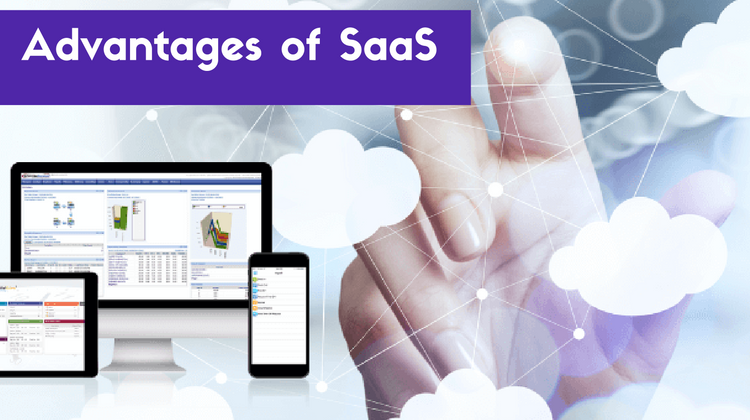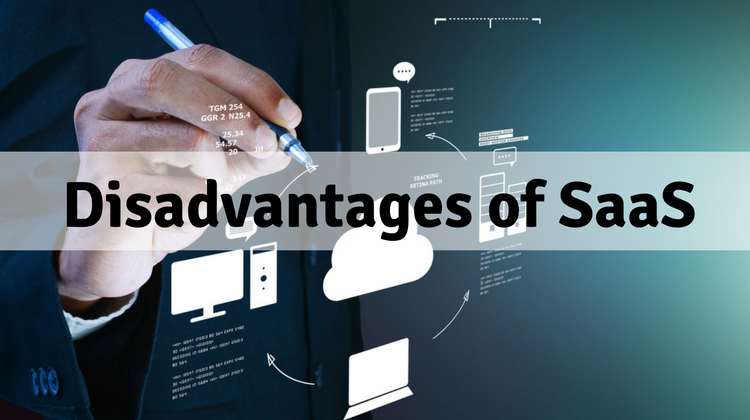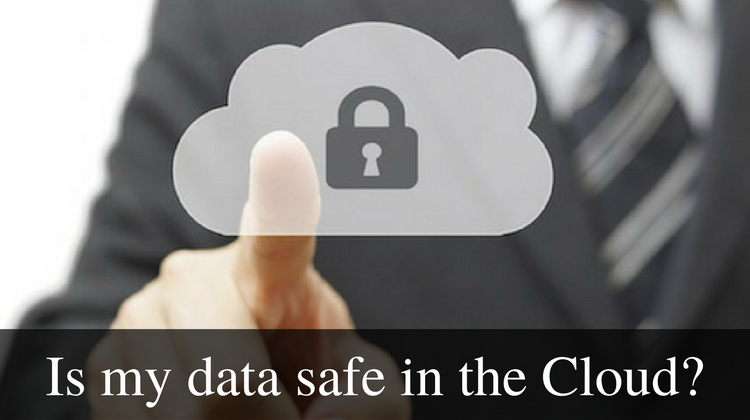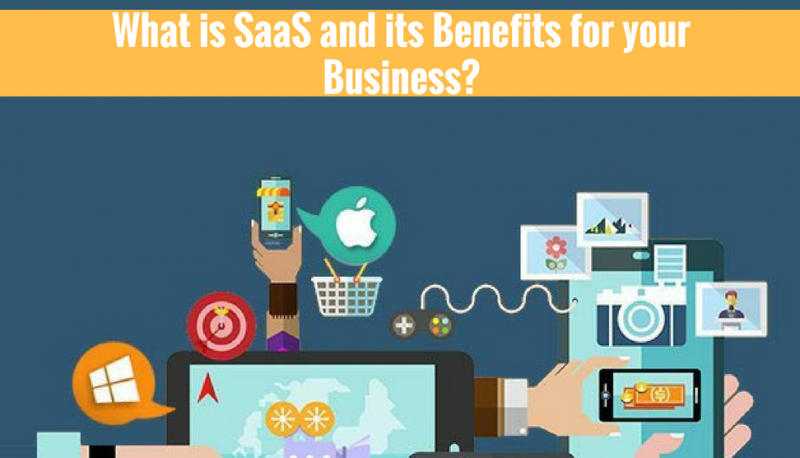Software as a Service (SaaS) has been around for a while, but many people are still searching for answers to questions about the technology.
What is it, exactly? What�s all the hype about? Is it right for my business?
This article addresses these questions and helps you make sense of this increasingly popular way of using the software in the workplace.
What is SaaS?
SaaS, or Software-as-a-Service, is an on-demand, cloud-based delivery model for software applications. A service provider hosts the application at a remote location and the user accesses it over the Internet using a web browser.
[Tweet “SaaS, or Software-as-a-Service, is an on-demand, cloud-based delivery model for software applications. “]
The service provider manages the infrastructure on which the application runs. The customer pays for a monthly or yearly subscription and the fee for service is usually based on the number of users.
Resources can be scaled up or down for the customer on an as-needed basis.
An example of a SaaS application that is familiar to most Internet users is Google Apps, a suite of business productivity apps that includes email, calendar, and file sharing and editing.
[Tweet “Facebook and Twitter are SaaS, as are services such as Office 365 and Google Apps.”]
What are the Biggest Advantages of SaaS?

- Low cost (no initial large-scale investment in licenses and infrastructure), pay-as-you-go pricing model.
- Minimal risk and up-front investment which enables companies to move quickly on new business ideas and bring products and services to market faster.
[Tweet “By utilizing a cloud-based program, you can be confident that your security risks are minimized.”]
- Flexibility regarding licensing and scalability of resources.
- Easy to deploy and manage.
- Encourages simplification and standardization of business processes.
- Predictable operational costs.
- Levels the playing field for SMBs to compete with large companies.
- Better security, disaster recovery, backup.
- Short development timeframes for developing custom applications to use with the basic application.
- Often, greater functionality and more frequent upgrades than on-premise software.
- Procuring, Deploying and managing the infrastructure and software in-house is no longer necessary, which means a large technical staff isn�t required (the vendor maintains and upgrades the software).
- For end-users: transparent updates; anytime, anywhere access; all that�s required is a web browser.
[Tweet “Many cloud-based programs allow for, and even encourage, collaboration between departments and employees.”]
What are the Biggest Disadvantages of SaaS?

- Loss of a certain amount of control over applications and data.
- It may be too risky to move sensitive data and critical applications outside of a company�s firewall for privacy, security and regulatory reasons.
- Certain functions may be too difficult to go to a SaaS application due to their complexity or degree of customization.
- Integrating SaaS applications with existing in-house applications can be problematic, especially if the two systems must talk to each other in real-time.
What can you use SaaS for?
While SaaS applications exist for virtually any business process you can think of, the following is a list of the areas in which SaaS is most commonly used:
- Customer Relationship Management (CRM) � Manage customer, client, and sales prospect information but also automate many critical business functions like sales activities, marketing, customer service, and support. Examples are Salesforce.
- ERP � Gain control and visibility of the main functional areas like procurement, manufacturing, service, sales, finance, and HR. Examples are SAP Business One OnDemand and Everdata Cloud ERP Services.
- Productivity/Collaboration � Be productive in and out of the office, share documents and connect with colleagues. Examples are Microsoft SharePoint Online and Office 365 and Zoho.
- Marketing Automation � Manage email and social media marketing campaigns. Examples are Marketo.
- Financial/Accounting � Manage your company�s finances and keep the books up-to-date. Examples are Quickbooks Online.
[Tweet “Manage your company�s finances and keep the books up-to-date. Examples are Quickbooks Online.”]
- eCommerce � Everything you need to sell online from shopping carts to website hosting. Examples include Shopify.
- Business Intelligence � Import data, generate reports and graphs, and perform Big Data analytics in a flash. Examples include Birst, Kognitio and Jaspersoft.
- The functionality of many of these applications overlaps among the categories: for example, the Zoho suite of products includes accounting, invoicing, CRM and HR components in addition to productivity and collaboration apps.
Is my data safe in the Cloud?

The truth is that storing your business-critical data on a server in your office building is probably riskier than storing it on a SaaS service provider�s server in a remote location.
This sounds counterintuitive, but SaaS vendors have more resources to devote to security, data backup, and infrastructure maintenance than most small and medium-sized businesses.
Plus, data centers have to undergo strict security audits.
Addressing the security of your data in the Cloud is more a matter of due diligence on your part. It�s up to you to verify the vendor�s security policies, and procedures are up to par.
Also, be aware that if the vendor doesn�t handle your company�s data in compliance with government regulations your business must follow, you will be held responsible, not the vendor.
How do I know which SaaS vendor to trust?
There are several things you need to do to have the utmost confidence in any SaaS vendor you choose to work with.
First, you have to do your research. A thorough understanding of your business�s needs and whether or not a particular SaaS application can meet those needs is critical.
Second, you must get references from other businesses similar to yours who have used the application. Hearing about their experiences deploying, using and managing the software is invaluable.
Third, you have to ask questions of the cloud computing service provider to understand exactly what you are getting yourself into, questions aimed at uncovering any hidden costs, how you will get your data back in the event that you decide to switch vendors, what level of support you can expect, what security policies and procedures they have in place, etc.
And fourth, after you select a vendor and its application, you have to negotiate a solid Service Level Agreement (SLA) that clearly defines the business relationship between your company and the vendor and lays out the expectations of both parties in as much detail as possible.
How do I get my organization ready for SaaS?
Adopting a SaaS solution has the potential to be an enormous undertaking, depending on its level of importance to the organization.
A stand-alone application like email, for example, is going to require less in the way of integration and cultural change than a CRM or ERP system.
For larger, more complicated systems, not only will the technology change but the business processes and training methods that go along with it will also need adjustment.
You also have to anticipate that an entirely new set of problems and operational issues will crop up on a day-to-day basis, not the ones you are used to with on-premise software.
Part of the planning process is discovering what those new problems and issues might be. These challenges can be overcome with the right amount of preparation.
At the beginning, identify what you hope moving to a SaaS solution will accomplish, define what success looks like, and work out the financial details, like what the costs are likely to be and what your company can afford.
Then comes the technical part: defining requirements and outlining the technical specifications.
Once you have that down, you can start evaluating vendors. And lastly, the implementation stage: selecting the vendor, deploying the application, and training the end users.
Preparing to deploy a SaaS application is much the same as deploying on-premise software. You just have to be aware of and plan for the unique challenges regarding systems integration and business process management that SaaS applications present.
Do you have a SaaS question? A tool you want to recommend, or a�SaaS story to tell? Share it here in the comments section below.
Tip: Are you thinking to move your business to SaaS provider? Check this article, it concentrates on some of the questions your company CIO should ask potential SaaS providers.




Add new comment